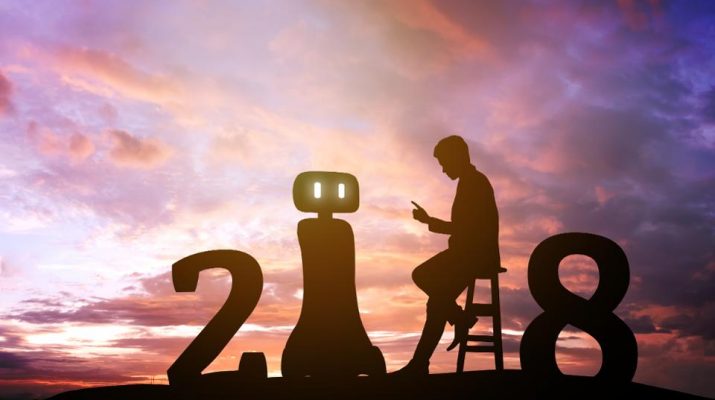There has been tremendous buzz around Artificial Intelligence in the past year, and I expect it only to increase in 2018. From self-driving cars to computers that create their own languages (and so had to be shut down) – we’ve heard and read about it all. Some of these stories depict AI accurately but many of them are plain hyperbole. There hasn’t been another technological advance in the past that has the power to change our lives so profoundly and is yet so misunderstood. Let me take a stab at the 3 things I would expect to see, realistically, in the field of AI in 2018:

Advancements in Medical Diagnosis
Computer Vision, the branch of AI that deals with making computers process and recognize images better has probably benefited the most from the recent developments in Deep Learning technology. Deep Learning is a form of Machine Learning that is used to create models that mimic the structure of neural networks in the human brain. Deep Learning has been around as a concept for a few decades, however, an explosion in the amount of data available to train these models as well as the advances in computing power have made Deep Learning practically feasible only recently.
Computer Vision is used today to power applications such as self-driving cars as well as lenses/filters on Snapchat. However, one of the more impactful applications of Computer Vision is in medical diagnosis – specifically in the branch of medical imaging or Radiology. Algorithms are now being created to process medical images such as CT scans, MRIs, ultrasounds, x-rays etc. for the purpose of diagnosing diseases. Whereas a doctor might only process 20-25 cases a day and is prone to human-error, a machine is able to process thousands of such images and perform more accurate diagnosis. In fact, researchers at IBM recently published an article wherein they report an algorithm that surpassed the ability of dermatologists to diagnose melanoma, a common form of skin cancer.

Augmented Reality
Augmented reality (AR) entails the superimposition of virtual objects created by a computer system on top of a real-world scenario or image. This is also an application that is powered by the Computer Vision field of AI. Microsoft’s HoloLens or Magic Leap’s Creator glasses are good examples of commercially available AR technology. They allow users to place virtual objects in the real world and manipulate them using their hands. Not only will AR allow us to interact with virtual objects in a more natural and efficient way, it will allow for us, in a sense, to manipulate reality by placing virtual objects in it. For instance, you’ll be able to see how a new couch will look in your living room before you buy it. AR will also allow for virtual and real-world objects to interact amongst themselves. Doctors will be able to place a virtual valve within a patient’s heart during surgery to simulate its function in real-time and evaluate its fit with the patient.

Voice-Powered Assistants
2017 saw the rise of AI technology that can recognize voice with 99% accuracy. This is an absolute game-changer for voice-based applications. You might already have heard of Apple’s Siri or Amazon’s Alexa. These are example of voice-powered assistants that, literally, cater to the user’s every (voice) command. They can be used to play your favourite music, send messages to your friends and even place an order for pizza. In 2017 we saw a proliferation of voice-powered assistants for use within our homes. Next year, we will see advancements in the capabilities of these assistants. We will also see them entering our workplace – helping us become more productive.
That’s right. I don’t think an AI is going to take over the world any time soon. Even though the technology is advancing at a breakneck speed, it’ll take at least a few more decades before it reaches the point of being self-aware, if at all.

